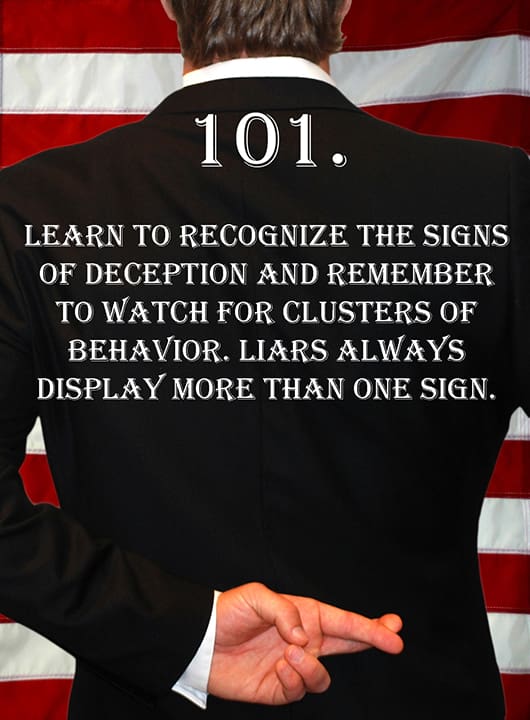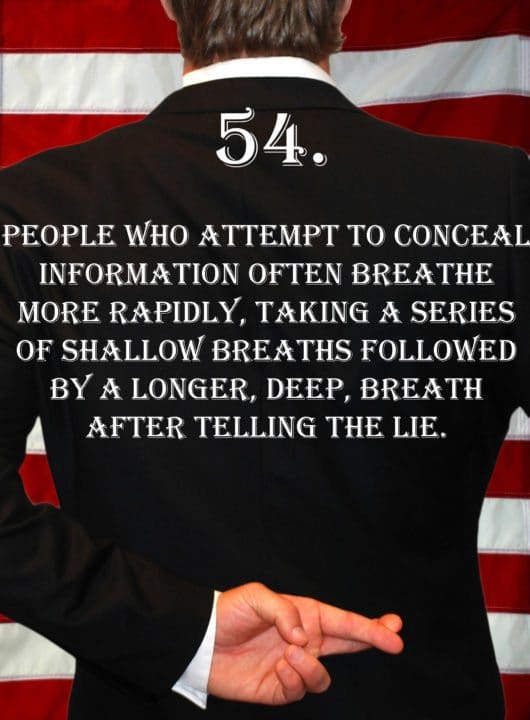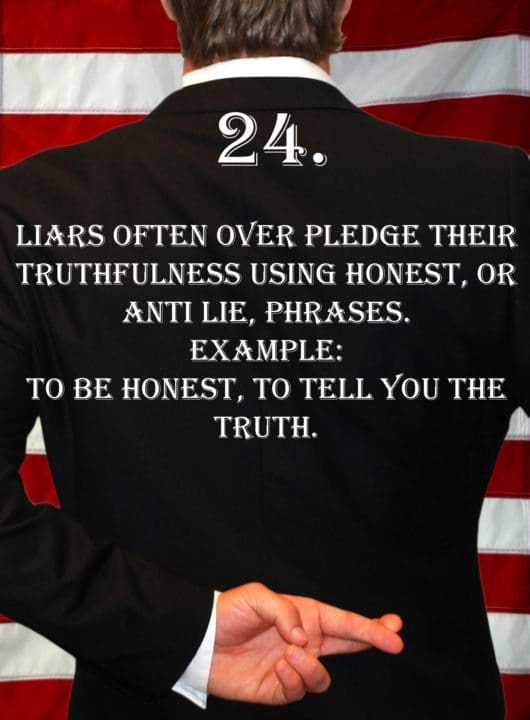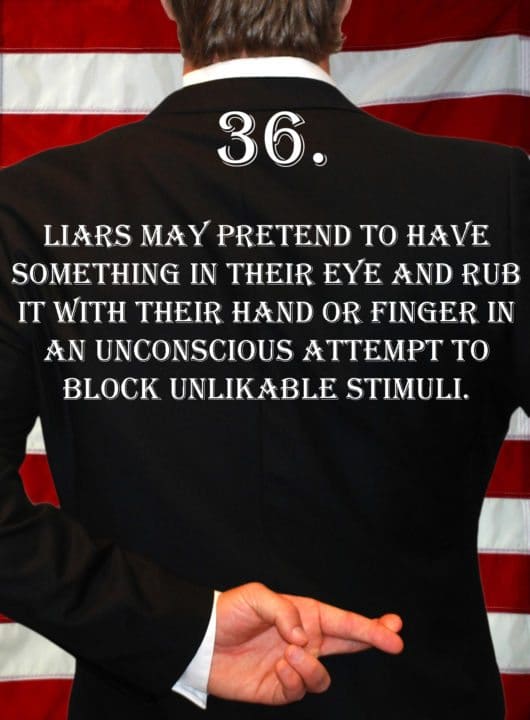
Deception Tip 80:
Smiles are very prevalent in lies. Pay close attention to the symmetricality of the smile, as asymmetrical smiles may be deceptive.
Listen To The Podcast!
E80 – Smiles In Lies – Deception Tips Podcast – Click Here To Subscribe
Podcast Transcript
Hello and welcome to the Deception Tips podcast where you will learn amazing cues to detect deceit that will help you read people like never before. I’m your host Spencer Coffman, let’s get started.
Hello and welcome to Deception Tip 80 of the Deception Tips podcast. Plugging right along, let’s dive into it. Last week, we talked about how it’s important for you to believe body language.
Now, it’s not important for you to believe all body language, it’s important for you to believe the unconscious body language. Well, how do you separate that? Pretty simple.
Remember, unconscious body language will always be truthful. In addition, it’s the stuff that happens subtly, it’s unconscious, it’s behind the scenes but it’s something you can still see. It’s like what goes on on the side, if you’re not paying attention, you don’t see it but if you’re paying attention to people you will see these little slips, we’ve talked about it many times.
They are simple things like gesturing one way, saying another, or hinting at something while doing something else. It’s a lot of stuff with symmetrically if they aren’t symmetrical, congruent with the speech or with what they’re doing. Same sides of the body, having different actions going on or if something is contradicting something else, like a shoulder shrug on one side and not the other.
Tons of different signs that can be exhibited on the body, nervousness behaviors, tension, stress, all of those different things you can witness on someone’s body.
You can easily see if someone’s happy or enjoying themselves, but usually, happiness and enjoyment do not play a role in deception unless they’re really happy about lying but that’s beside the point. The point is, that you need to pay attention to unconscious body language because that is always truthful.
Keep that in mind the next time you’re in a conversation and you think you should be doing the talking but someone else is or if you have anything that you need to ask someone and interrogate them.
Perhaps have someone else do the talking and you can simply observe. Keep all that in mind because non-verbal, unconscious body language will always lead you to the truth, provided you know what it means and what they are really saying.
Today, we’re going to talk about a different deception tip, we’re talking about one that is related to smiling which is very important and it’s very exciting for me. I’ve been waiting a long time for this tip because as you may know or as you should know, I’ve mentioned it before.
You’ve probably seen it if you’ve read any of my books or anything online, is that in 2013, I did a study on smiles and whether or not people could accurately detect a real smile or an enjoyment smile from a fake smile or a non-enjoyment smile.
I found results that were really out there compared to a lot of the traditional methods of studying. I was also pretty much the first study to use the software of an eye tracker to determine where people watch in addition to the self-report of having them tell us where they thought they watched. I found that people really were able to detect real and fake smiles at about a 50% level which was no surprise.
I found some starkly contradictory results compared to a lot of the big-name researchers out there and my article was somewhat controversial and the findings were somewhat controversial. However, no one has yet reproduced the study or done any studies in response to it to try to prove it wrong or otherwise, they simply accepted it.
Therefore, what I found was that people, instead of watching the mouth as all the other studies have reported that that’s where people look when they’re detecting a real and a fake smile, I found that people watch the eyes. Now, that’s not all people, that’s successful people, so people who detected a real versus a fake smile at about 70% or higher accuracy.
The accuracy level of like Wizards or really good natural or trained body language professionals, they do about 70 or higher. I found that anyone who detected smiles at about 70% or higher, the eye-tracking software showed that they watch the eyes of the people giving the smiles. Whereas in the past, most people said no, they watch the mouth.
In addition, I found out that people who were primarily watching the mouth, they performed less than chance, so they did worse. I found a lot of other things in the study, men-women differences, age differences, race differences or ethnic background, etc. You can check all that out if you’d like, the study is available for free on my website at spencercoffman.com.
You can simply type into Google ‘facial expression, the ability to detect the difference between enjoyment and non-enjoyment smiles’ or type in ‘Spencer Coffman, enjoyment smile study’, ‘Spencer Coffman facial expressions smiles’.
You need to put those keywords into Google and it will come up. Or you can just check out the publications on my website. That being said, we are going to talk about smiles today and how they play in the lying and what they do, and how you can use them and see them in lies.
So here it is, this is Deception Tip number 80. Smiles are very prevalent in lies, pay close attention to the symmetricality of the smile as asymmetrical smiles may be deceptive. Here it is again, Deception Tip number 80. Smiles are very prevalent in lies, pay close attention to the symmetricality of the smile as asymmetrical smiles may be deceptive.
So, what is this saying? Well, it’s saying that you need to pay attention when people are smiling when they’re talking to you. Why? It is because smiles are used in lying. Why are they used in lying?
Well, it’s really very simple. Remember in a lot of the different deception tips we’ve talked about with the face and how a lot of expressions come on the face. When we’re in a conversation, we are taught that we need to look people in the eyes, we need to watch their face.
As a result, the conscious knows that there are a lot of signs that are going to be displayed on the face. Therefore, the conscious says ‘no, we need to mask the face.’ We talked about this a lot in episode 37, Mask the Face, on how when people lie, they try to hide the emotions and the expressions on their face more than the rest of the body.
Therefore, when you watch the rest of the body, you’re going to have a better interpretation of deception and body language, and nonverbal unconscious signs that are displayed. So, if they’re masking the face, how are they doing it? Generally, a smile is the easiest way to cover up another facial expression.
When someone feels sad, they may smile, when someone feels pain, they may smile because smiles are so full-faced. That means they occur on both sides of the face, they cover the cheeks, the eyes, and they get everything.
So, a smile is a great mask for little signs that may appear on the face. If you watch these smiles, you’ll see that they are used as masks and that they may be covering up something. That is why they may use these smiles to cover up all the stuff on the face because it’s just easy to use them.
If you pay close attention to them, you’ll see that they are in fact, or can be in fact a part of deception because they’re covering up a sign. So, the smile is deceptive in and of itself and the sign that was being leaked is showing you another area in which someone is being deceptive. We’re going to talk a lot more about that and I’ll recap that and go over a little bit more coming up right after this.
Do you have a Facebook account? Of course, you do. Like the Deception Tips Facebook page and participate in some online discussions, read more information, write a review or simply say hello. Like the page today on facebook.com/bodylanguagefbpage.
Welcome back to Deception Tip number 80 where we are talking about Smiles in Lies and how smiles are very prevalent when people lie. The reason is that most people try to mask their face when they lie because they know that people are watching their face.
One of the easiest ways to mask the face is by simply using a smile. In addition, when someone smiles to cover up something, it’s like a second layer of deception.
So, let’s say they’re leaking a sign on their face, that is a sign of deception in and of itself. Then they put a smile over it, now they’re being deceptive about the sign of deception, so it’s like another layer of deception. It’s really cool when you see that smile and then it’s almost like you can tell that there is a pattern or cluster going on because they’re masking another sign of deception.
What was that other sign? Well, you’ll have to interpret that to figure it out and then you have to realize what the heck they were talking about so I can see what they were being deceptive about and what they were trying to hide, what was really coming out. It’s not as complicated as it sounds, it’s simply you watch for a smile and you determine whether or not that smile is real or fake.
If it’s a fake smile then it’s obviously a lie because it’s fake, so it’s a false smile. Someone was giving you a smile that’s false, that’s an act of deception in and of itself. Now you need to determine if that smile was used to cover up another emotion. If it was used to cover up something else, then you need to get to the root of the problem and determine what they’re lying about or what they’re trying to hide from you.
Otherwise, if they’re just pretending to be happy, you’ll see that it’s not a real smile. Maybe they don’t really enjoy the party, so I’ll let them go home, whatever the case may be but it’s something to pay attention to. How do you know whether or not a smile is real or fake? Well, reading that study that I did will give you a lot more answers on that, but I’ll briefly touch on it here.
Generally, if a smile is real, you’re going to see some wrinkles in the corners of the eyes, this is commonly called crow’s feet. You’re going to see the cheeks really rise up and there are going to be a couple of little lines underneath the nostrils of the nose so that you’ll see a very full face smile. In addition, real smiles don’t last very long, they’re very short.
Remember how quick micro-expressions can be, about a quarter of a second, a real smile from start to finish will be about 4 seconds or less, that’s from start to finish. So, when you start to see the smile rise, the cheeks rise up, then it goes into the eyes, then the whole thing finishes, it must be less than four seconds, not must be but generally will be.
Fake smiles are either really quick like about a two-second deal or one-second deal or they will last a lot longer on the face because someone is really trying to show you that yeah, I really liked it, thank you very much and it lasts a long time.
So, those are a couple of things to pay attention to with the smiles. Remember to watch the eyes, you’ve got to see those little crow’s feet up there. If you don’t then it is a half-smile or a fake smile or a masking smile, something else is going on.
In addition, remember to watch other body language as well, don’t simply look for smiles when someone lies because they may not always smile when they lie. Watch for many different signs of deception and if you see the smile, it may be asymmetrical. If it’s asymmetrical, then you’ll know that there might be some deception.
Remember we’ve talked about this before with asymmetrically and how facial expressions must be symmetrical. We discussed that way back, a long time ago in Symmetrical Expressions, that was episode number 14. Go ahead and review that if you don’t remember much about it because it was talking a lot about how expressions should be symmetrical when they’re truthful.
When someone smiles, if it is asymmetrical that asymmetricality may show up more on one side of the face than the other. The reason is that our brain is contralaterally related to our body. The right brain controls the left side of the body, the left brain controls the right side of the body. It’s two hemispheres in our brain controlling opposite sides of the body.
One of those hemispheres is a little bit more dominant in deception and then that means that those expressions will be a little bit more prevalent on one side of the face versus the other.
If the left side is more expressive than the right that may indicate false expression, false emotions, and deception. If the left side is more expressive, that would mean the right brain or the right hemisphere is more prevalent in deception.
Why? It is because the right is a little bit more free-spirited, it’s the creative side. The left is more logical rules, mathematics, so the left is going to be more truthful, follow the rules. Therefore, on the left side of the face, you will see a little bit more asymmetricality, you’ll see that, you’ll also see how it pulls back and forth from one side of the face.
So, if the smile started on the left, because it’s false then the right will continue to match it and then the left may also go off sooner because that smile goes away, but you’ll see that it’s on the left side of the face more.
It will be predominantly there first, the right is going to catch up because the conscious is going to realize what’s happening, ‘I’ve got to give this smile, I need a mask, I need to finish it out and it’s going to try to make it look as symmetrical and as truthful as possible.
So, pay attention to smiles and whether or not they are a real or a fake smile. If you see it’s a fake smile, try to determine if it’s simply a fake smile and that’s it or if it’s a smile that’s trying to cover up some other form of emotion or expression and if that’s the case, you can try to determine what that is.
I want to thank you for listening to this week’s episode of the deception tips podcast. I hope that you’ll share it with your friends, subscribe to the feed, check out the deception tips videos, the blog and take a look at the books I have available and, as always, tune in next week for a new deception tip.
Video Transcript
Hey guys, my name is Spencer Coffman, thank you for watching the deception tips videos. They’re all about teaching you how to read people and detect deception so that you will be able to tell if someone is lying to you. Today, we are going to talk about a cool thing that happens every single day, you see this all the time, you probably see it thousands of times a day depending on how many people you see.
You also display this type of gesture probably hundreds if not thousands of times every single day. What you don’t realize is that maybe half, maybe three quarters, maybe one-quarter of those times that you display it and see it, it may be fake, it could be deception. It might not be an active part of a lie that someone is telling but that emotion or that display of that gesture is deceptive in and of itself.
So, here we go, this is Deception Tip number 80. Smiles are very prevalent in lies. Pay close attention to the symmetricality of the smile, as asymmetrical smiles may be deceptive. This is important, this relates to a lot of the other tips that we have talked about over the past 80 episodes. If you are new to this channel or new to these videos, I really encourage you to take a look at some of those other videos as well as this one because they’re all going to tie together.
So, symmetricality is important in smiles, when things are symmetrical, a smile happens on both sides of the face and that’s important in all of these emotional expressions. If things are symmetrical, they’re generally true, so symmetricality happens on both sides of the face, the expressions, smiles, truthful, genuine, enjoyment smiles are going to happen on both sides of the face. Oftentimes, you may say oh, well, I see people smile all the time, it always happens on both sides of the face.
Well, did it happen more on one side than the other? If so, then that could be a false smile, it could have started on one side and then continued and then even out on the other and that could be a false smile. Also, did the smile last a long time? Remember, spontaneous, things that are spontaneous in an emotional expression are often more truthful than non-spontaneous.
So, if a smile happens, genuine truthful smiles are usually four seconds or less, so someone smiling for a long period of time like when they’re taking a picture and it’s longer than four seconds, is that emotion genuinely felt? Are they really feeling that emotion or are they just putting on that face? That’s typically what happens, a lot of times when people lie, smiles come in because it is a very great masking emotion.
If someone is about to show fear or sadness or anger, a smile might come on to mask that emotion. You’ll see this a lot in other cultures such as Asian cultures where they are taught you cannot show sadness or anger or any of that. When you’re being reprimanded or scolded, you’re supposed to smile and put on that happy face. What happens is in the Americas, where people are ignorant to that, they might say, “What, do you think this is funny?”
That’s just what they’re taught, they’re taught to have a smile on their face when something serious is happening or when they’re in trouble. It’s not that they think it’s funny it’s because that’s how they were brought up, so that’s something to be aware of, be culturally educated. That smile is being put on as a mask to that emotion that they’re really feeling, you might be chewing them out, they’re smiling. They’re not happy, obviously, but they’re putting on a mask to that emotion.
So, when people are lying and all these other emotions might be happening, they might put on that smile to mask it. If you want some more smile information, I did a research study that you can check out back in 2013 on truthful or real or fake smiles, genuine and non-genuine, or enjoyment and non-enjoyment smiles. That is something that you could look at to get a little bit more information on true and false smiles.
In terms of deception, smiles are probably the number one masking emotion or masking gesture that comes on to hide emotion. Remember, if they’re not telling a lie, putting on that masking smile, it’s covering up something, which means that’s deception in and of itself. So, if they have fear and they smile, well they were feeling fear now they put on a smile, that’s deception because they’re covering up what they’re really feeling with something they’re not feeling.
For example, when you’re taking your picture and you’re smiling, are you really happy that your picture is getting taken or you’re smiling for the picture? You’re putting on a deception right there, you’re deceiving the people who are going to look at that picture because are you really happy or are you just smiling for the camera? Sometimes you could really be happy, sometimes not, you can generally tell in the pictures when a smile is true or when it’s just that fake smile.
Usually, what happens is those fake smile pictures, you’re looking at them and then they end up getting deleted anyway. So, keep in mind that smiles are used to mask a lot of things and then a smile if it’s just happening to mask something that could be deception in and of itself. There may not be a lie going on there, there doesn’t have to be a lie going on there.
So, if this is your first time watching these videos, I’d love to have you subscribe to the channel on YouTube. Feel free to comment with any questions you may have as well. Also, if you’d like some more information, we have books, podcasts, and blog posts all available on spencercoffman.com that are dedicated to teaching you exactly what every body is really saying.
Until next time.






